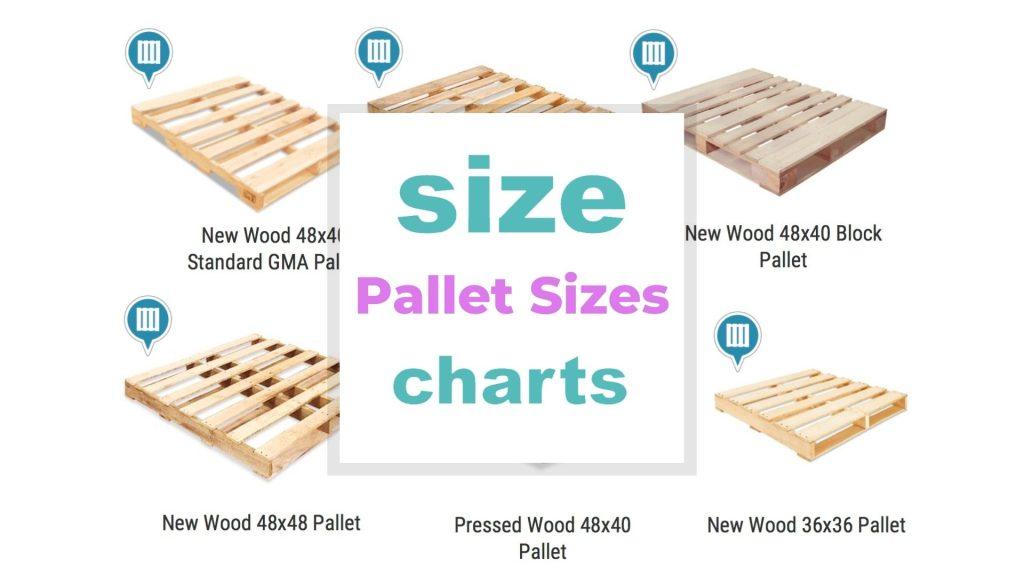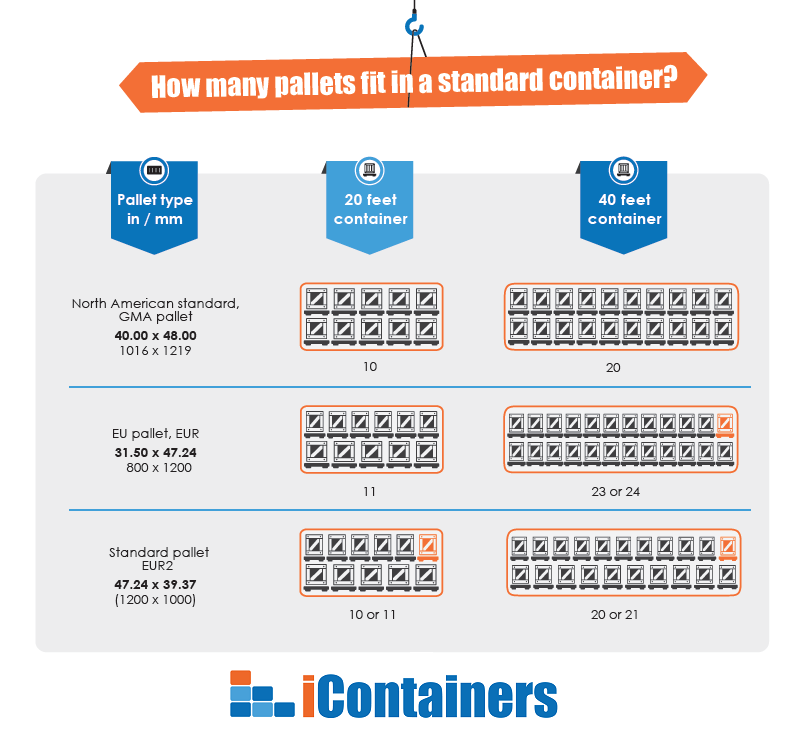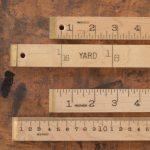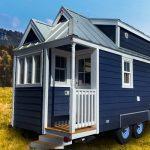Standard Pallet Sizes and Dimensions
A pallet is a platform that is used to transport goods. It is rectangular in shape and has a number of slots or holes that allow a forklift to grip it. Pallets are usually made from wood, although plastic and metal versions are also available (skip right into the Standard Pallet Sizes Charts).
They come in a range of standard sizes, which makes them ideal for use in warehouses and other industrial settings. Pallets are an essential part of the supply chain, and ensuring that you have the right sizes in stock can help to keep your business running smoothly.

When it comes to shipping products, most businesses rely on pallets to get the job done. But with so many different pallet sizes on the market, it can be difficult to determine which one is right for your needs.
In this guide, we’ll break down the standard pallet sizes and explain what each one is best used for. We’ll also provide some tips for choosing the right pallet size for your business.
Jump right into the Frequently Asked Questions
Related: U-Haul Truck Size: Choose the right sized moving truck
Standard Pallet Sizes Table of Contents
- Pallet size chart and common uses
- Are there standard pallet sizes?
- What is the size of a standard UK pallet?
- How tall is a 48×40 pallet?
- Frequently Asked Questions
Pallet size chart and common uses
Related: Pallet Dimensions and Types by industries in inches & centimeters
| Dimensions, (W × L) | Industries Using | |
| cm | in | |
| 101.6 × 121.9 | 40 × 48 | Grocery, many others |
| 106.7 × 106.7 | 42 × 42 | Telecommunications, Paint |
| 121.9 × 121.9 | 48 × 48 | Drums |
| 121.9 × 101.6 | 48 × 40 | Military, Cement |
| 121.9 × 106.7 | 48 × 42 | Chemical, Beverage |
| 101.6 × 101.6 | 40 × 40 | Dairy |
| 121.9 × 114.3 | 48 × 45 | Automotive |
| 111.8 × 111.8 | 44 × 44 | Drums, Chemical |
| 91.4 × 91.4 | 36 × 36 | Beverage |
| 121.9 × 91.4 | 48 × 36 | Beverage, Shingles, Packaged Paper |
| 88.9 × 115.6 | 35 × 45.5 | Military 1⁄2 ISO container, fits 36″ standard doors |
| 121.9 × 50.8 | 48 × 20 | Retail |
Please note that there are so many types of pallets depending on what is being transported. The pallet sizes also keep varying from country to country and even based on regions within countries. This means that the best way to find out the correct size for the pallet that would be perfect for your needs is by liaising with your transporters and or manufacturers.
These two categories of professionals will be able to give the best advice on the size that would be most suitable for your specific needs.
Are there standard pallet sizes?
Related: Shipping Container Dimensions explained (with container size charts)
Yes. The standard size for a pallet is 48″x40″. The majority of pallets produced in the United States are this size. Other popular sizes include 42″x42″, 44″x44″, and 36″x36″.
There are also a variety of non-standard sizes, which are typically used for special applications. For example, 40″x48″ pallets are often used for shipping boxes that are too large to fit on a standard 48″x40″ pallet. In addition, 60″x48″ and 72″x48″ pallets are used for handling large items such as appliances and machinery.
While there is no industry-wide standard, the vast majority of pallets produced in the United States conform to one of these four sizes.
The most important aspect to note is that pallets come in all shapes and sizes, and it’s important to be aware of that when you’re designing your packaging.
You don’t want to end up with a product that’s too wide or too long for a pallet, because that will create unnecessary problems during the shipping process.
Learn more about standard-size pallets (video)
What is the size of a standard UK pallet?
Related: Storage Unit Size Chart – Guide To Comparing Spaces
A standard UK pallet is 1,200 mm x 1,000 mm. ISO pallets, on the other hand, are 1,200 mm x 800 mm. So what’s the difference? While both types of pallets are generally the same size, there are some key differences to be aware of.
For one thing, ISO pallets are typically made of hardwood, while UK pallets can be made of either hardwood or softwood. In addition, ISO pallets have a slatted design, which allows for better ventilation and drainage.
UK pallets, on the other hand, usually have a solid top and bottom deck. As a result, UK pallets are typically used for storage applications, while ISO pallets are more commonly used for shipping.
How tall is a 48×40 pallet?
Related: Printable Ruler In Cm: Make it Yourself
Well, that depends on the type of pallet. A general-purpose pallet, for example, is usually 48×40 inches. But a heavy-duty pallet might be a little bit taller—say, 48×42 inches.
It’s important to note that there’s no one “standard” pallet size. Manufacturers can create pallets in any size they want, so you’ll need to check with your supplier to see what dimensions they offer but most importantly discuss with them so they get to understand what you want to use the pallet for.
But in general, most pallets fall within the range of 48×40 to 48×48 inches. So if you’re looking for a new pallet and you’re not sure what size to go with, that’s a good place to start.
How many 48×40 pallets fit on a truck?
Related: Printable ruler in inches with free download and tips
There’s no one-size-fits-all answer to this question, as the number of 48×40 pallets that fit on a truck will depend on the size of the truck. However, a good rule of thumb is that you can typically fit around 10 pallets on a standard semi-trailer truck.
Of course, this will vary depending on how the pallets are loaded onto the truck, and whether or not you’re using stacking blocks or other methods to maximize space. But if you’re just looking for a general idea of how many pallets fit on a truck, 10 is a good estimate.
Some trucks can hold around eight pallets, but it really depends on the make and model of the truck. Others have a longer bed and can hold more pallets, while others have a shorter bed and can’t carry as many. It really just depends on your specific vehicle.

Frequently Asked Questions
How many pallets are a full truckload?
There is no definitive answer to this question, as the number of pallets that can fit on a truck varies depending on the size and type of truck. However, a typical semi-trailer truck can typically accommodate between 28 and 48 standard pallets, with 36 being the average.
For smaller trucks, such as box trucks, the number may be lower, while for larger trucks, such as flatbeds, it may be higher.
Ultimately, the best way to determine how many pallets will fit on a particular truck is to consult with the trucking company. They will be able to provide you with an accurate estimate based on the specific vehicle that will be used for your shipment.
If you’re looking for a smaller pallet that’s still going to be able to hold a decent amount of weight, the quarter-pallet is a good option. The dimensions of a quarter-pallet are 48 inches by 40 inches by 5.5 inches.
How tall is a pallet for LTL?
The standard pallet size for LTL is 48 inches by 40 inches. But sometimes, you might need a custom size. Just reach out to your carrier and let them know what you need. They’ll be more than happy to help.
What does GMA stand for in pallets?
It stands for Grocery Manufacturers Association. And this is a pretty important thing to know because it determines the size of the pallet.
The GMA pallet is the most common size in the United States, and it’s 48 x 40 inches. But there are other pallet sizes out there, and that’s why it’s important to know what they are so you can choose the right one for your needs.
The dimensions of a Euro-Pallet, for example, are 1200mm x 800mm, and the height is 145mm. But that’s not all. The Pallet Euro Council also regulates the thickness of the boards, which must be between 18 and 22 millimeters.
And if you’re looking to buy a Euro-Pallet, you’re in luck—they’re pretty common. In fact, you’re likely to find them at most distribution centers and warehouses.
What size is a blue pallet?
Blue pallets come in a range of sizes, from Standard to XXL. Standard blue pallets are typically 40″ x 48″, while XL and XXL blue pallets can be up to 60″ x 60″. Blue pallets are also available in Half-Size, which is ideal for smaller shipments.
When choosing a blue pallet, it’s important to consider the size and weight of your shipments.
Half-Size and Standard blue pallets are typically best for lightweight shipments, while XL and XXL blue pallets can accommodate heavier loads. Whichever size you choose, you can rest assured that your shipment will arrive safe and sound.
It is also important to know that there are different standards for Europe, North America, and Asia-Pacific, so it’s important to make sure you’re using the right size pallet for your region.
Conclusion on Standard Pallet Sizes
Now that you know all there is to know the most important basics about standard pallet sizes, you can feel confident in choosing the right one for your needs.
Remember to consider the weight and dimensions of your product, and factor, in the space, you have available to store the pallets. With this guide, shopping for pallets is easy and hassle-free!
That’s it, for now, we’ll certainly continue to remain here to offer any assistance you might need regarding standard pallet sizes. Let’s start with any questions you might want to throw our way.
Kindly use the comet’s area to ask and we’ll be more than glad to provide the answers.
Picture in this post is by Arno Senoner on Unsplash
Related to Standard Pallet Sizes
- Barbie Doll Size : What are different sizes of Barbie ?
- Blanket sizes chart : blanket sizes and dimensions in inches & cm
- Tablecloth size chart – What are standard tablecloth sizes ?
- How Many Meters Are In A Yard?
- How Many Centimeters are 8 Inches?
- Knife Sizes and Different Types
- 4 Inches is How Many Centimeters?
- Light Bulb Base Sizes : What size light bulb base do I need?
- Tesalate Towel Size Guide
- Light bulb Size : What are the different and standard bulb sizes?
- Duvet Sizes: What is a Standard-Size Duvet?
- Single Car Garage Size and Dimensions
- How High Is A Story?
- How Much Does 1 Cup Of Rice Weigh?
- Cast Iron Skillet Sizes: What Size Do I Need?
- Dollar Bills Size Chart
- Pizza Sizes: Which One to Order?
- How To Measure A Foot Without A Ruler
- Wine Glass Size Chart
- Tiny Houses Size Charts
- How Many Inches Are In 20 Centimeters?
- How To Measure 1 Meter Without A Ruler?






















